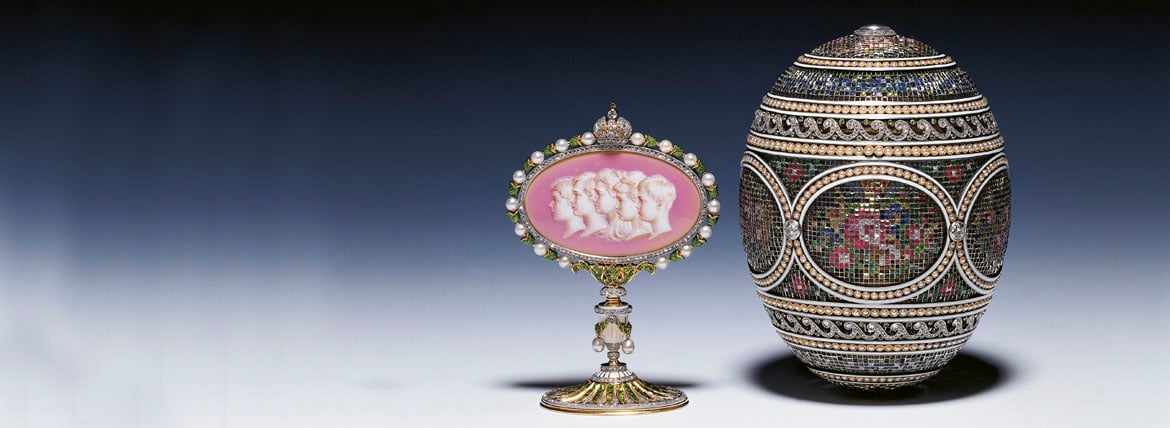
Fabergé in the Royal Collection
An introduction to Fabergé in the Royal Collection
3. Easter Eggs Beyond Compare
Fabergé's Imperial Easter Eggs are the best known and most admired of his creations. Showcasing a remarkable ingenuity in design, they also demonstrate his outstanding technical ability as a goldsmith and jeweller.
Establishing a Tradition
Easter is traditionally the most important celebration in the Russian Orthodox calendar. At this time, hand-dyed hen's eggs would be brought to church to be blessed and presented to family and friends. By the late nineteenth century, however, this practice had evolved among the St Petersburg aristocracy into the exchange of costly gifts. The first Fabergé Easter egg was commissioned by Tsar Alexander III in 1885, as a wedding anniversary present for his consort, Marie Feodorovna. It became the first in a series of fifty produced by Fabergé for the Russian imperial family between 1885 and 1916. After his father's death, Tsar Nicholas II expanded the tradition, and from 1895 two eggs were produced almost every year: one for Tsarina Alexandra Feodorovna and one for his mother, the Dowager Tsarina.
Creating a Masterpiece
Each egg was prepared in great secrecy and took about a year to produce. Although Fabergé enjoyed complete freedom in design, he generally based an egg's theme on important recent events or achievements in the imperial household. He worked with trusted designers such as Franz Birbaum and Alexander Ivaskev, as well as with dozens of stonecarvers, gem cutters, engravers, polishers and enamellers. Most of the eggs also included a 'surprise' – a miniature model, image or mechanical object hidden inside. Their cost was consequently considerable, averaging 10,000 roubles each. At today's prices, they ranged from £76,000 to £900,000.
Forming a Collection
Many of the imperial eggs were confiscated during the Revolution of 1917 and later sold to dealers and collectors in the West. Eight have disappeared and never been recovered. The three in the Royal Collection were acquired by King George V and Queen Mary in the 1930s.
Watch the video or click on an object below to find out more:







